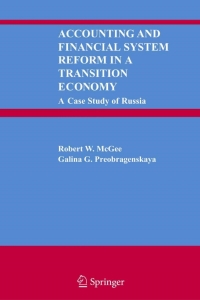Capital Investment, Discount Rates, Intangible and Indirect Benefits, Time Horizon, Contemporary Manufacturing Environment Mallette Manufacturing, Inc., produces washing machines, dryers, and dishwashers, Because of increasing competition, Mallette is considering investing in an automated manufacturing system. Since competition is most keen for dishwashers, the production process for this line has been selected for initial evaluation. The automated system for the dishwasher line would replace an existing system (purchased one year ago for $6 million). Although the existing system will be fully depreciated in nine years, it is expected to last another 10 years. The automated system would also have a useful life of 10 years. The existing system is capable of producing 100,000 dishwashers per year. Sales and production data using the existing system are provided by the Accounting Department: Sales per year (units) 100,000 Selling price $300 Costs per unit: Direct materials 80 Direct labor 90 Volume-related overhead 20 Direct fixed overhead 40* *All cash expenses with the exception of depreciation, which is $6 per unit. The existing equipment is being depreciated using straight-line with no salvage value considered. The automated system will cost $34 million to purchase, plus an estimated $20 million in software and implementation. (Assume that all investment outlays occur at the beginning of the first year.) If the automated equipment is purchased, the old equipment can be sold for $3 million. The automated system will require fewer parts for production and will produce with less The automated system will cost $34 million to purchase, plus an estimated $20 million in software and implementation. (Assume that all investment outlays occur at the beginning of the first year.) If the automated equipment is purchased, the old equipment can be sold for $3 million. The automated system will require fewer parts for production and will produce with less waste. Because of this, the direct material cost per unit will be reduced by 25 percent. Automation will also require fewer support activities, and as a consequence, volume- related overhead will be reduced by $4 per unit and direct fixed overhead (other than depreciation) by $17 per unit. Direct labor is reduced by 60 percent. Assume, for simplicity, that the new investment will be depreciated on a pure straight-line basis for tax purposes with no salvage value. Ignore the half-life convention. The firm's cost of capital is 12 percent, but management chooses to use 16 percent as the required rate of return for evaluation of investments. The combined federal and state tax rate is 25 percent. The present value tables provided in Exhibit 191.1 and Exhibit 198.2 must be used to solve the following problems. Required: 1. Compute the net present value for the old system and the automated system. Enter your answers in thousands. Old system New system $ Which system would the company choose? old system 2. Repeat the net present value analysis of Requirement 1, using 12 percent as the discount rate. Enter your answers in thousands. Old system $ New system 4 3. Upon seeing the projected sales for the old system, the marketing manager commented: "Sales of 100,000 units per year cannot be maintained in the current competitive environment for more than one year unless we buy the automated system. The automated system will allow us to compete on the basis of quality and lead time. If we keep the old system, our sales will drop by 10,000 units per year. Repeat the net present value analysis, using this new information and a 12 percent discount rate. Enter your answers in thousands. Old system 4. An industrial engineer for Mallette noticed that salvage value for the automated equipment had not been included in the analysis. He estimated that the equipment could be sold for $4 million at the end of 10 years. He also estimated that the equipment of the old system would have no salyage value at the end of 10 years. Repeat the net present value analysis using this information, the information in Requirement 3, and a 12 percent discount rate. New system to NPV - $ old system to NPV il









